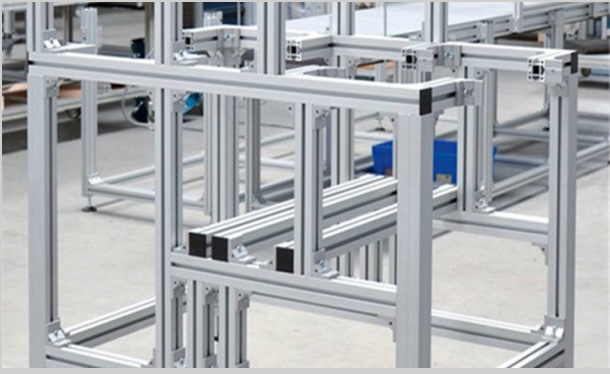What Factors Affect The Extruded Aluminum
The choice of aluminum alloy plays a significant role in the extrusion process and the final properties of the extruded product. Different alloys have varying levels of strength, ductility, hardness, and other characteristics, which can affect the extrusion process, dimensional accuracy, and mechanical properties of the extruded profile.
1. Extrusion speed
Generally speaking, the extrusion speed is directly proportional to the temperature and metal pressure in the container. In order to maintain a stable process and provide a constant extrusion section, speed, temperature and pressure must be properly related. The speed at which the billet is pushed through the die during extrusion affects the extrusion process and the quality of the extruded profile. Too high or too low extrusion speeds can lead to issues such as surface defects, distortion, or insufficient filling of the die.
2. Extrusion ratio
The extrusion ratio for any shape is an indicator of the amount of mechanical work that will be done during extrusion. When the extrusion ratio of a part is relatively low, the least amount of mechanical work will be done on the areas of the shape that involve the greatest metal mass. On the other hand, when the extrusion ratio is high, greater pressure is required. The pressure is what forces the metal through the small opening.
3. Blank temperature
The ideal billet temperature provides suitable surface conditions and acceptable tolerances. Likewise, it ensures the shortest possible cycle times. It is best to use the lowest possible billet extrusion temperature. Higher temperatures cause the metal to flow more freely. Metal may not enter confined areas. Therefore, shape dimensions may be outside the specified tolerance range. Also, high temperatures can cause metal to tear at thin edges and sharp corners.
4. Extrusion machine
Weight per foot becomes important in aluminum extrusion due to different extrusion machines. As expected, extruding the lighter parts required smaller presses. However, there are other issues that may require a higher capacity press.
A common example is larger thin-walled hollow extruded shapes. Despite the low weight per foot, the extrusion press tonnage required may be greater. The effect is similar to that of the extrusion ratio. A higher factor will make the part more difficult to extrude. As a result, this had an impact on press production.
5. Extruded shape
Shape determines the complexity and cost of extruded components. Aluminum extrusion can create a wide variety of shapes, but there are some limitations. For example, a simple solid shape is easier, faster, and less expensive than a semi-hollow shape. The more complex the shape, the more difficult and expensive it is to extrude.
Application of Extruded Aluminum Parts
The material qualities make aluminum extrusion an effective and efficient manufacturing process for many industries. The material’s tensile strength and strength-to-weight ratio make it ideal for extruding transmission housings, vehicle chassis, engine blocks and many other vital components.

Extruded aluminum plays a vital role in the production of nuclear reactors, electronic cooling equipment, air conditioners and condenser tubes. Extruded aluminum is non-magnetic, making it suitable for use with household wires, coaxial cables, and aluminum enclosures.
Additionally, the corrosion and rust resistance of this aluminum material makes it ideal for outdoor applications. It is important to note that aluminum extrusions have highly reflective properties. They are therefore ideal for protecting products from infrared radiation, light and radio waves.
Conclusion
Aluminum extrusion is an economical production process that helps in the manufacture of different products with different shapes. This process facilitates the manufacture of different simple or complex shapes with excellent product properties. You can create profiles 8-24 feet long that can be fabricated, heat treated, and provided with finishing options to best suit your product specifications. However, you should carefully follow the extrusion steps and design tips for best results.




























